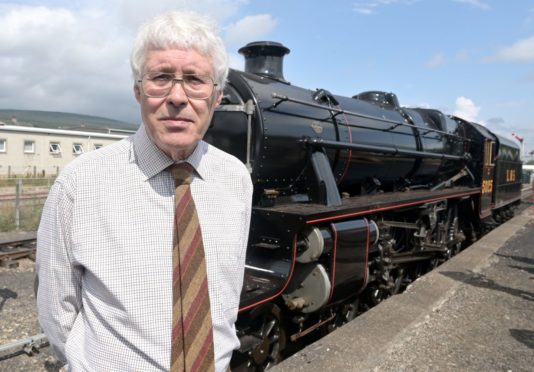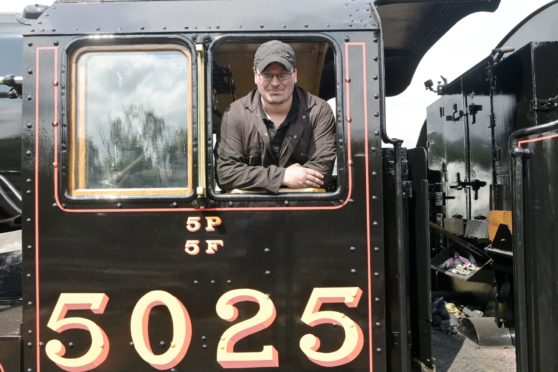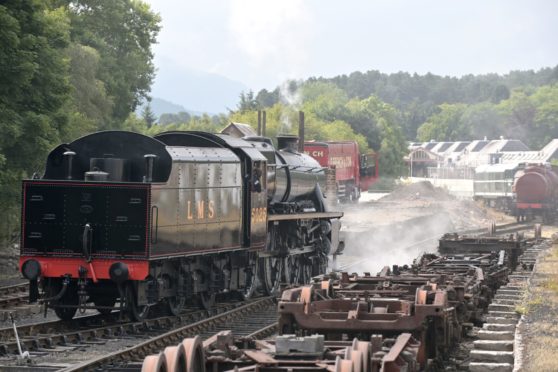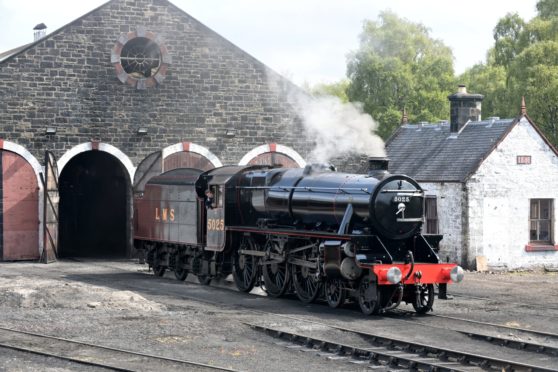The biggest Highland locomotive restoration project in nearly 100 years has been completed in Aviemore.
The LMS Black Five 4-6-0 No 5025 has returned to the tracks and was unveiled at the Strathspey Railway.
This comes after a £520,000 project and more than 10 years of engineering work saved the locomotive from being scrapped.
The LMS 5025 has been out of service for 28 years.
The locomotive made a journey on to the Strathspey Railway and its 10 miles of heritage track.
Rescue mission at Strathspey Railway
This project which received £50,000 from the National Lottery Fund is one of the most comprehensive overhauls ever undertaken on a preserved locomotive in the UK.
The oldest surviving Black Five moved under its own steam on the Aviemore-Broomhill line for the first time last year.
Now bosses are excited to get visitors on board after the locomotive made its first public appearance.
It comes six years after campaigners had hoped it would get back in service.
Project engineer Paul Blount is delighted to see the locomotive fixed after volunteers worked tirelessly on the restoration.
Mr Blount said: “It’s a story of endeavour, dedication, enthusiasm, hours of effort and sheer determination.
“People said it couldn’t be done with our lack of facilities, manpower and finance.
“The manpower carried out can’t be measured and it has been unbelievable.
“We are looking forward to welcoming passengers on board.
“It feels like a dream for the locomotive to return to Strathspey Railway.
“This is oldest locomotive of its type in the world.
“It worked perfectly first time – almost unheard of in preservation.”
Locomotive’s history
The LM5 5025 was once part of the London, Midland and Scottish Railway.
Then Scottish railway heritage pioneer Ted Watkinson purchased the engine from British Railway in 1968 for the proposed preserved railway between Aviemore and Grantown-on Spey.
This went onto to be known as the Strathspey Railway.
The locomotive used to run services on the Strathspey Railway after the line opened in 1978 and also worked some special trains on the main line.
But LMS 5025 had to be withdrawn from service in 1993 because major work was ultimately necessary to save the loco from the scrapyard.
Soon after, Mr Watkinson died in 1981, the WEC Watkinson Trust was founded in his memory and spearheaded efforts to restore the locomotive.
‘It’s a story of belief’
Mr Blount added: “5025 is important as it was delivered to Perth Motive Power Depot when new in 1934 and worked on the Strathspey line until late 1935 so is considered a Scottish engine
“It is the oldest survivor, sixth built out of 842, and has been put back to 1934 condition.
“And it’s a story of belief by all the people who put time and money into the project.”
Joy for Strathspey Railway
The Strathspey Railway says this should be compared with the restoration of Flying Scotsman, where there was a a similar amount of work that got a £3m to £4m grant and cost the country £4,537,892.
Neil Sinclair, chairman of the WEC Watkinson Trust, said: “This has been the most significant engineering work carried out on a locomotive in the Highlands since Lochgorm Works in Inverness was confined to light repairs in 1929.
“5025 hauling trains again on the Strathspey Railway is a major event in railway history.
“It’s a story of endeavour, dedication, enthusiasm, and hours of effort.”



